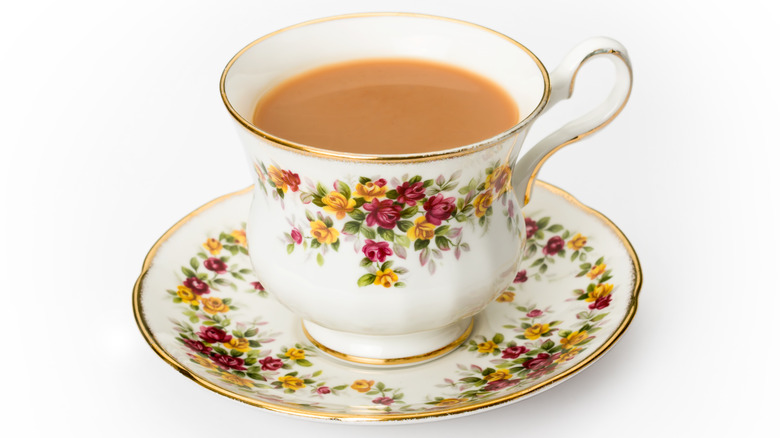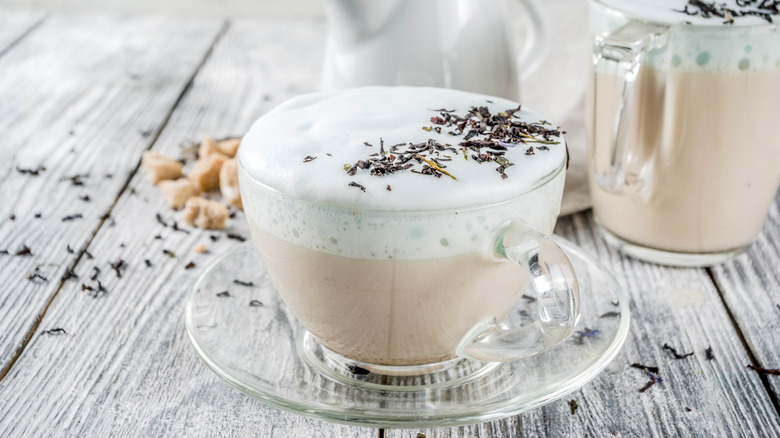Make Tea Flavors Shine With Almond And Coconut Milks
The British way of enjoying tea typically involves a dollop of milk in the cup first to cool the incoming hot liquid (and save the porcelain from any cracks), while also lending a creamy texture to the refreshment. As with many of our favorite beverages, they often go hand-in-hand with a dollop of dairy for flavor and froth.
However, those who don't or otherwise cannot drink dairy are no strangers to the many non-milk and cream substitutes available. From oats, to nuts, to soy and rice, all milk alternatives have found their way into a cup of daily brew for many. While none offer quite the same taste in your cup, there are two nut milks that aren't just a worthy substitute — they actually enhance the tea's flavors.
Both almond and coconut milks offer up just-as-creamy, lighter, and more flavorful options than dairy milk or cream. They are worthy of a spot in your next porcelain pour. What's the best way to pair them, use them, and what do you need to know before you do?
Flavor and texture boost for your tea
Almond and coconut milks have a natural sweetness and creamy texture that helps cut the bitterness of a strong tea, while remaining lighter than milk. They also come in flavor variations, such as vanilla, that go nicely with tea. When it comes to pairing, just about anything goes. A chocolate peppermint tea plus a dollop of coconut milk, English Breakfast with a hint of nutty almond, rooibos with either, or the ever-bitter dandelion root with a mix of the two — the options to play around with are endless.
One thing to note: Both almond and coconut milks may curdle in your hot cup of tea. Tea has a high acid content, and that paired with its hot temperature — plus the protein content and cold temperature of the milks — can result in a very unappealing (albeit completely harmless) clotted appearance. Worry not, there are a few quick fixes for that.
For starters, you can take a page out of the British manual on tea and add the almond or coconut milk first to the cup. This will slowly raise the temperature of the nut milk instead of it experiencing a shock of hot when dribbled into the tea. You can also preheat the milk in the microwave or on the stovetop to mitigate the temperature difference. A fun way to prevent the curdling is to use a handheld frother — no curdling, plus a latte effect? Win-win.

